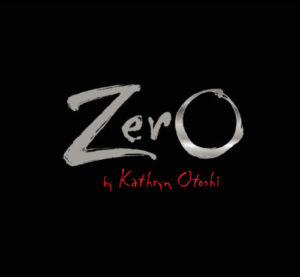 Why I Picked It Up:
Why I Picked It Up:
It’s one of those picture books that kept coming up on blogs and in stores, but I never picked it up. Mostly because it’s a math book and my concentration has always been ELA/R and Social Studies. I finally saw it at the local library and had to check it out – literally!
Why I Finished It:
I can definitely see how kids would love the book with its enjoyable story line, color coordinated numbers, and sentences arranged all over the page in a large font. My teacher brain was going non-stop! There’s a strong theme or moral to the story, great characters, math content, rhyming, alliteration, multiple meaning words, etc.! Essentially, Zero is a number that feels different and doesn’t “count.” Despite multiple attempts to blend or be like the others and to find value, he repeatedly fails. Finally, he triumphs as he realizes he can create new numbers, by joining forces with the others.
Who I Would Give It To:
This is a great book for primary classrooms. There are many literacy and math lessons that can be taught with this book.
Integration Ideas:
Math Lessons
Before I begin, let’s be reminded that I am not a math specialist, but you can’t help but teach math with this book. This is a great picture book that explains how zero has a value and is a number. Many times younger students (sometimes even older students!) have a hard time seeing the “value” in zero. With older students, this book would also lend itself to discussing place value (tens and ones).
Characterization, Making Connections, and Writing
Since the numbers are personified, we can treat Zero as a character. Zero does not feel he has value and or fits in the beginning. While he specifically says that, have students explain his behavior according to how he feels about himself. As the book continues he finds a way to “have value.” At this point, the character is changing. Have the students explain how the character is changing and what events led to this change.
This is a great opportunity for students to make connections to this story. We learn from the book that everyone has value. Have students either explain their own value or have students share why others in the class have value. This is time for all students to see that everyone is valuable and provides value for the class as a whole and that it’s important to be nice to everyone.
Students can write how it’s important to value others or about the value they add to the class or school.
Multiple Meaning Words
The word value has meaning in everyday speech and a different meaning in math. Words that hold one meaning in regular language and another in the content areas challenging for all students, but particularly difficult for English Language Learners (ELL). Some of those words in this book are count and value. Take some time to explain the different definitions. This is a great time to app smash!
Vocabulary, Alliteration, and Concrete Poetry
There are a lot of great action verbs in this story. One example is “She leaped – flying, soaring, rocketing …” Not only are these great action verbs, but the words move up the page, similar to concrete poetry, to help give meaning to the words flying, soaring, rocketing! Some pages have alliteration: “she’d soar, she’d sizzle, she’d shine.”
Once students study the great verbs and alliteration in the book, have them emulate this in their own writing. Have them find a place where they can describe movement. Then, choosing a word, let students look that word up in the thesaurus to get varying degrees of the movement word. Have students choose a few of the synonyms to describe the movement with stronger, more definite word choice.
How have you used this book in your class?






Leave a Reply